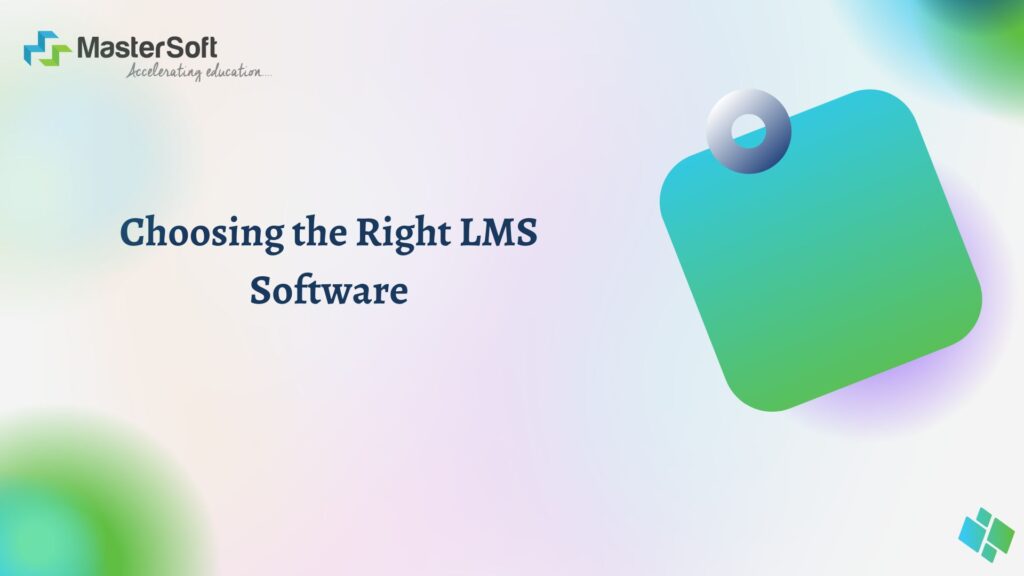Choosing the Right LMS Software: Key Considerations and Features
In today’s dynamic learning landscape, Learning Management Systems (LMS) have become essential tools for businesses, educational institutions, and organizations of all sizes. An LMS empowers you to deliver effective training programs, track learner progress, and measure the impact of your learning initiatives. But with a plethora of LMS options available, selecting the right one can be a daunting task.
This blog post serves as your guide to navigating the LMS selection process. We’ll explore key considerations and features to help you choose an LMS that perfectly aligns with your specific needs and goals.
Understanding Your Requirements
Before diving into feature comparisons, it’s crucial to introspect and understand your unique requirements. Here are some key questions to ask yourself:
- What are your learning objectives? Are you aiming to onboard new employees, provide compliance training, or upskill your existing workforce?
- Who are your learners? Consider their technical expertise, preferred learning styles, and access to devices.
- What type of content will you be delivering? Text-based modules, interactive videos, gamified elements, or a combination?
- What features are essential? Do you need advanced assessment tools, reporting and analytics, or social learning functionalities?
- What’s your budget? LMS solutions come with varying pricing models, so factor in your budget constraints.
Essential LMS Features to Consider
Once you have a clear understanding of your needs, delve into the features offered by different LMS providers. Here are some key functionalities to prioritize:
- Content Management: Look for an LMS software that allows you to upload, organize, and deliver diverse content formats like SCORM-compliant eLearning modules, videos, documents, and assessments.
- User Management: Efficient user management tools are crucial for assigning roles, permissions, and tracking learner progress.
- Course Creation Tools: The ability to create engaging and interactive courses with multimedia elements, quizzes, and branching scenarios is essential.
- Assessment and Reporting: Robust assessment features like quizzes, surveys, and assignments enable you to evaluate learner comprehension and identify areas for improvement. Reporting tools provide valuable insights into learner performance and overall program effectiveness.
- Mobile Compatibility: In today’s mobile-first world, ensure your LMS is accessible and optimized for learning on various devices.
- Scalability and Customization: Choose an LMS that can adapt to your growing needs and accommodate future training requirements. Customization options allow you to tailor the platform’s look and feel to match your branding.
- Integrations: Consider how the LMS integrates with your existing tools like HR systems, content authoring platforms, and learning experience platforms (LXPs) for a seamless learning ecosystem.
- Security and Compliance: Information security is paramount. Select an LMS that offers robust security measures, data encryption, and compliance with relevant industry regulations.
Additional Considerations
Beyond the core features, here are some other factors to weigh in during your selection process:
- Ease of Use: A user-friendly interface is essential for both administrators and learners. Intuitive navigation and clear instructions minimize training time and boost user adoption.
- Customer Support: Reliable customer support is critical for addressing technical issues and ensuring smooth LMS operation.
- Free Trial or Demo: Most LMS vendors offer free trials or demos. This allows you to experience the platform firsthand and assess its suitability for your needs.
- User Reviews and Case Studies: Reading user reviews and case studies can provide valuable insights into the real-world experiences of other organizations using the LMS.
Conclusion
Choosing the right LMS is an investment in your organization’s learning and development strategy. By carefully considering your requirements, evaluating features, and conducting thorough research, you can select a platform that empowers you to deliver impactful training programs, enhance learner engagement, and achieve your learning objectives. Remember, the ideal LMS is not a one-size-fits-all solution. Take your time, prioritize your needs, and choose the platform that best supports your unique learning goals.


